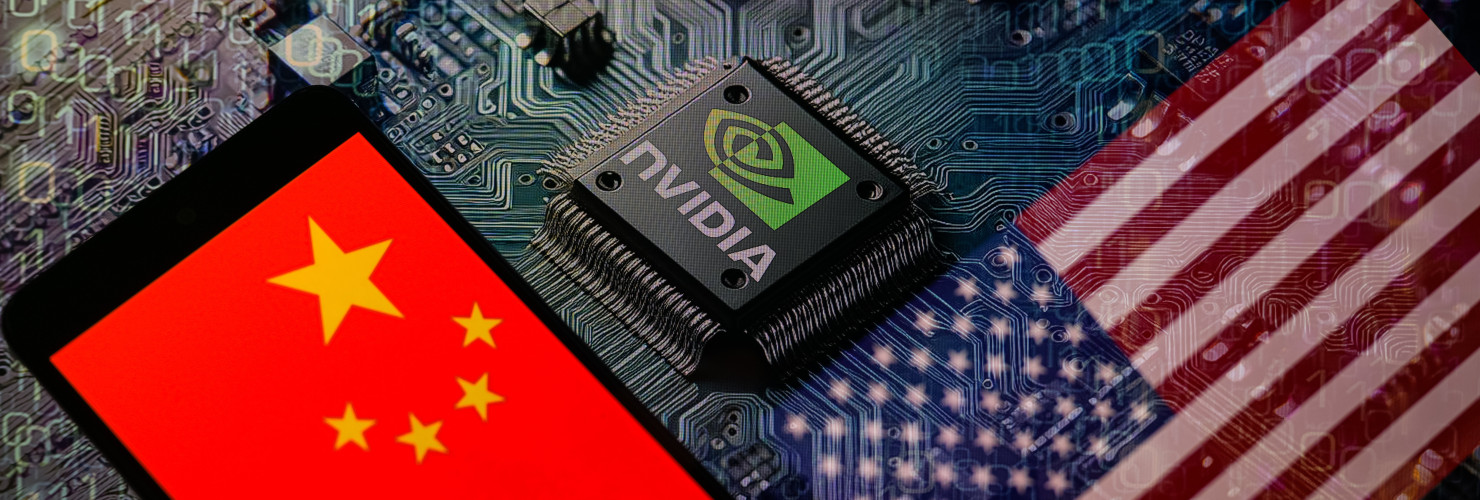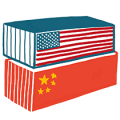

Tech “choke-points” – the long-term side-effects for China and the US
Washington’s regular tweaks will make its high-tech export controls more effective in the short term and trickier to manage beyond that, say Antonia Hmaidi and Wendy Chang.
The United States plans to regularly update its export restrictions on semi-conductor manufacturing equipment and high-end chips to China by closing loopholes as technology advances and workarounds emerge. In the short run, this looks set to increase the effectiveness of the US-led campaign to curb China’s access to highest-tech. But, in the long term, it will erode the support of many allied countries that do not want to choose between China and the US – and encourage China to invest more heavily in domestic manufacturing.
The US Commerce Department updated its year-old restrictions – aimed at addressing “national security concerns posed by” Beijing’s “military modernization” – to include Iran, Venezuela and all 19 other countries the US has an arms embargo against and stop them serving as possible export-conduits to China. It also extended its so-called de-minimis clause to certain advanced semiconductor manufacturing-equipment, in particular forcing European companies to end the export of products that contain only a tiny fraction of US-made parts.
By changing the performance threshold for AI chips eligible for export, Washington aimed to make sure that chipmakers cannot pare down product specifications to get around US restrictions – a workaround recently favored by US high-end chip manufacturer Nvidia, which, for example, turned its A100 chip into the slower A800 for China. The US government now forces companies to notify it whenever they are planning to sell chips close to the performance threshold to China or Washington’s 21 other most-distrusted countries.
These measures will make it more difficult for China to get hold of equipment banned by the US in roundabout ways or legally import Western chips that are good enough. But chip makers from allied countries are worried that the US may be using export restrictions on China to create a welcome side-effect – protecting parts of its high-tech industry from foreign competition. US Commerce Secretary Gina Raimondo has said if any company tried to design around US controls, Washington could introduce new rules the next day.
While the US government is willing to restrict the business of US as much as foreign semiconductor companies, it has to date not issued a much-expected executive order on cloud computing. Providers such as Amazon’s AWS or Microsoft’s Azure offer online access to vast computing capabilities – and are an obvious loophole in the attempt to block China’s access to artificial intelligence. This has fueled the impression that some US tech companies are being protected from measures that have impacted a slew of non-US companies.
Breakthroughs by Chinese semiconductor makers show the limits of enforcement
Other factors could also weaken the effectiveness of export controls in the longer term. Recent breakthroughs by Chinese semiconductor makers like Huawei and SMIC show the limits of enforcement, as licenses are still being granted. Also, as almost all Western high-tech equipment contains some US technology, wider applicability of the de-minimis clause forces manufacturers in other countries to get US approval for exports to China. Even capitals that share Washington’s goal of blunting China’s military may chafe against that.
Enforcing a global blockade will require continued international cooperation and maintaining the lead of the West in key technologies to maintain choke points that Beijing cannot easily circumvent. But many companies and countries that are prominent in the semiconductor supply chain worry that this would inextricably pressure them into making a choice between doing business with the US or China, as doing business with both would get tricky.
AI company G42, based in the United Araba Emirates, can attest to this. With a sprawling business that covers energy, finance and healthcare, G42 announced a collaboration with OpenAI to integrate the US company’s generative AI models into its businesses. US intelligence soon raised concerns about G42’s many ties to China, including with sanctioned hardware manufacturer Huawei. To appease the US and maintain its access to critical AI chips, G42 afterwards announced its plan to cut some of these ties to China.
The other problem with a policy of so-called choke points is that it will spur China to invest more in alternative methods to reach the same goals like neuromorphic computing, smaller application-specific language models and producing smaller chips on older hardware. While these would likely be commercially unviable internationally, they would be good enough for Chinese companies cut off from global suppliers. Over time, the Chinese market would develop into a separate ecosystem with different products and standards to the West.
Export controls will force China to invest across all parts of the supply chain
Being relatively comprehensive in scope, the export controls will force China to invest across all parts of the semiconductor supply chain, which means it will take a long time for Beijing to build up adequate domestic supplies. This would likely allow Washington to achieve its stated goal of slowing Chinese military development, but at the same time close off the Chinese market to the rest of the world. Separate and disconnected tech ecosystems will also make it harder for the West to keep track of China’s progress in critical technologies.
US success in stopping or slowing China’s highest-tech development depends not only on Washington’s commitment to closing loopholes as they occur, but critically also on other countries. Many allies have different strategic considerations about working with or working against Beijing – and China is showing the resolve to begin the herculean task of building its own capacities. Maintaining leadership in key technologies, keeping Western governments in line and monitoring Chinese progress are now Washington’s big three challenges.


